Jun
19
2009
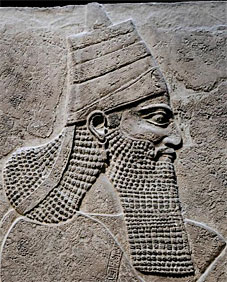 “Assyria dominated the ancient world in the centuries before the exile of Judah. Sometime during the reign of Jeroboam II of Israel (832–792 bc), and probably toward the latter part of that reign, the Israelite prophet Jonah had been used by God to convert the city Nineveh and all its citizens to the worship of the true God. Jonah 3:5 and 4:11 indicate that God showed His mercy to the children of the city, so that we are entitled to assume that there were God-fearing people alive for the next seventy or so years in Assyria…
“Assyria dominated the ancient world in the centuries before the exile of Judah. Sometime during the reign of Jeroboam II of Israel (832–792 bc), and probably toward the latter part of that reign, the Israelite prophet Jonah had been used by God to convert the city Nineveh and all its citizens to the worship of the true God. Jonah 3:5 and 4:11 indicate that God showed His mercy to the children of the city, so that we are entitled to assume that there were God-fearing people alive for the next seventy or so years in Assyria…
Continue reading
Comments Off | tags: Assyria, Bible history, James Jordan, Jeremiah, Nineveh, Remnant | posted in Quotes
Jun
18
2009
The Son has promised to meet us two places: in our sin and in our weakness. He will rejoice in our glory, but only if we have first encountered Him in our humility. As sinners, we must meet Him in our sin, and as creatures, as newborn babies, as little children, we must meet Him in our weakness. Good works, maturity, and glory must be the outflow of that encounter, not the basis of it.
RITE REASONS No. 59: The Second Word V: On Images and Art, Part 3
James B. Jordan www.biblicalhorizons.com
Comments Off | tags: James Jordan, Spiritual Growth | posted in Christian Life, Quotes
Jun
15
2009
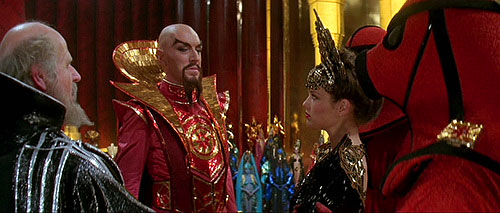
One major difference between Jordan and other preterists is his identification of Paul’s “man of sin.” Jordan is correct in naming the Herods rather than Nero because he understands biblical typology better.
Continue reading
2 comments | tags: Belshazzar, cherubim, Daniel, Esther, Film, Herod, James, James Jordan, Joseph, Mordecai, Nero | posted in Biblical Theology, The Last Days, The Restoration Era
Jun
7
2009
A couple of brave readers of my book Totus Christus have pointed out an apparent discrepancy in my ordering of the above three roles. One kindly writes:
The only question of substance I have for you concerns the prophet, priest and king flow of OT history. It may be that you disagree with Jim, but he’s quite insistent that the proper order is priest, king, prophet. He discusses this in From Bread to Wine, p. 9-15. In any case, it might be helpful to explain why you deviate…
Continue reading
Comments Off | tags: Aaron, David, Dominion Theology, High Priest, James Jordan, Moses, Music, Solomon | posted in Biblical Theology, Totus Christus
May
26
2009
[This has been posted previously but it makes sense to include it under this banner. In fact, the article itself might now make more sense!]
Gold, Onyx and Bdellium
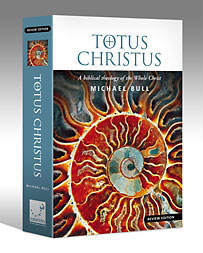
(The Tabernacle imagery is as much fun as it is grand and terrifying. I was thinking about rainbow striped onyx. In “Behind the Scenes”, James Jordan wrote:)
“These glorious gems represent the sons matured into tribes. A baby has not yet matured into anything specific. We don’t know if a child will become a good person or a bad one. We don’t know if he will be a musician or a minister or a farmer or a sailor or a computer engineer. As we grow, we grow from being “striped onyx” into a specific glory, which each of us has unique to himself. Thus, as the twelve sons of Jacob matured into tribes, each tribe took on a distinct glory of its own, represented by its gemstone.” Continue reading
Comments Off | tags: High Priest, James Jordan, Revelation, Totus Christus, Worship as commerce | posted in Biblical Theology, Totus Christus
May
20
2009
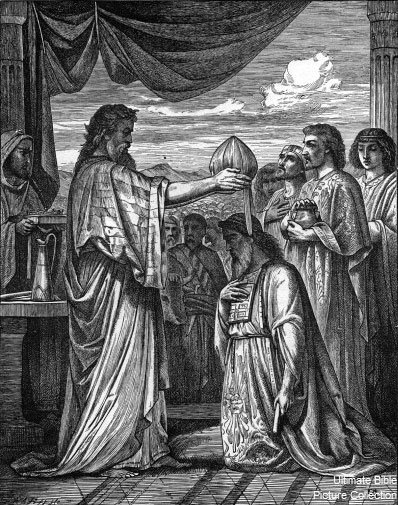
Leaving Wilderness Behind
In Through New Eyes, James Jordan notes that the wilderness was Havilah, the place mentioned in Genesis 2 that was rich in raw materials. Israel stripped Egypt of her gold, then plundered the desolate places of hidden wealth. She came out of the desert with a High Priest clothed in gems, and a new generation of soldiers born of God’s threshing floor.
The manna began to fall just after the Hebrews’ victory over Pharaoh. As with Jacob, the Lord was faithful to provide for His chosen one. But perhaps, in covering the ground, there is also the idea of a firmament (this might sound strange to some readers, but I have found the concept is a frequent one). The wilderness is the place of the humble bread of priesthood, displayed in obedience to God. It was the next generation that would drink the wine of Canaan after obedience under Joshua.
A Memorial
The Lord commanded that some manna be put into the Ark as a memorial. Symbolising manna, the white stone is a memorial of faithful priesthood. Joshua’s crossing of the Jordan was memorialised by large, engraved, white stones.
Continue reading
Comments Off | tags: Ark of the Covenant, Atonement, bdellium, Cain, Crucifixion, Ezekiel, Haman, Havilah, Herod, High Priest, James Jordan, Table of Showbread, Talmud, Urim and Thummim, White stone, Zechariah | posted in Biblical Theology, The Last Days
May
14
2009
Why do we put one-eyed, colour-blind pencil pushers in charge of the kaleidoscope?
The white stone mentioned in Revelation 2:17 was always a mystery to me. There are plenty of commentators who make lame suggestions as to its meaning (they sound a bit like a student making up answers during an exam!), but James Jordan got me thinking about it along the lines of its subtle use in the Old Testament. I intend to cover this in a few posts, and consequently may ramble even a little more than usual, but everything is connected in the Bible’s symbol language. This is a bit of a journey, but I am sure we will find it rewarding. Oh, and you will need to switch off your modernistic mind and use your imagination. You know, that thing you only use when you read or watch fiction? You can use it to understand the Bible as well. I know, scholars most often don’t. To cover their inability to make much sense of texts such as the one we are about to inhale, they pretend the writings are a bit primitive. Why do we put one-eyed, colour-blind pencil pushers in charge of the kaleidoscope?
Continue reading
7 comments | tags: High Priest, James Jordan, Modernism, Satan, Tabernacle, Typology, White stone, Zechariah | posted in Biblical Theology, The Restoration Era
May
7
2009
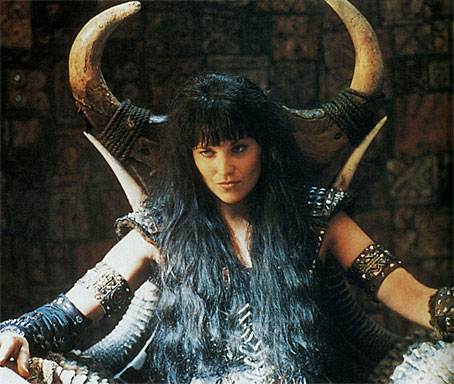
The Nazirite Vow
(Article requested by Drew J.)
This vow in Numbers 6 follows the “inspection of jealousy” in Numbers 5. Mark Horne observed that, just as the woman in Numbers 5 was to be inspected for harlotry with her hair untamed, so the Nazirite (whether male or female) was not to cut his or her hair. A Nazirite is a human picture of the church as a warrior bride. Hair is glory. Hair is the cloud of angels (and now, saints) surrounding the throne of God.
“Therefore the woman ought to have a symbol of authority on her head, because of the angels.” (1 Cor. 11:10)
A woman is the glory of her man. A woman’s hair is a symbol of submission, but also a symbol of her own “cloud of angels” – her godly offspring (See Ezekiel 5 for the children of Israel symbolised as the prophet’s hair, Micah 1:16, Matthew 10:30 and also my comments on Nehemiah and his hair-pulling). In battle, a Nazirite was like a blazing torch (the Ark-chariot/Adam) and smoking firepot (the smoke clouds of the incense altar/Eve army), parting his enemies like the pillar of God.
The hair is her “crop”, the twelve stars around her head (Rev. 12), and the question constantly posed to Israel concerns her role as God’s mediatorial Land. Is her crop one of thorns and thistles, or is it godly grain? This is also the question in Numbers 5, and the Lord put Israel to this exact test after the idolatry with the golden calf. The “harlots” were slain with the Levitical sword.
Continue reading
3 comments | tags: Adam, David, James Jordan, John the Baptist, Judges, Nazirite, Numbers 5, Numbers 6, Obed, Paul, Revelation, Samson, Samuel, serpent, Showbread, Tabernacle, Uriah, Wisdom | posted in Against Hyperpreterism, Biblical Theology
Apr
28
2009
or How Modern Conservative Theologians Unwittingly Use Literary Genres to Mask Their Unbelief
One of the big problems with modern theology is its habit of categorising parts of the Bible into literary genres. For sure, the Bible contains historical prose, visions, poetry and songs. But many passages won’t actually fit into these neat little pigeon holes without hamstringing their intended purpose. And as it turns out, these “genre-lisations” are excuses to compromise with humanistic pop-philosophy and pop-history.
The three main gripes I have are misuses of the genres poetry, polemic and apocalyptic.
Continue reading
1 comment | tags: Apocalyptic, Daniel, David Field, Esther, Ezekiel, Gnosticism, Ideology, James Jordan, John Dickson, Peter Leithart, Restoration, Revelation, Rowan Williams | posted in Biblical Theology, Creation, The Last Days, The Restoration Era
Apr
23
2009
“And the God of peace will crush Satan under your feet shortly.” Romans 16:20
James Jordan commented in one of his lectures that some churches had a serpent painted on the floor in the doorway. The saints trod him under foot as they entered God’s house to worship.
Continue reading
Comments Off | tags: Against Hyperpreterism, High Priest, James Jordan, Jericho, Joshua, Satan, Totus Christus | posted in Against Hyperpreterism, Biblical Theology, Totus Christus
“Assyria dominated the ancient world in the centuries before the exile of Judah. Sometime during the reign of Jeroboam II of Israel (832–792 bc), and probably toward the latter part of that reign, the Israelite prophet Jonah had been used by God to convert the city Nineveh and all its citizens to the worship of the true God. Jonah 3:5 and 4:11 indicate that God showed His mercy to the children of the city, so that we are entitled to assume that there were God-fearing people alive for the next seventy or so years in Assyria…





























